Introduction — Beyond Shimla and Manali
When most travelers picture Himachal Pradesh, they see the bustling Mall Road of Shimla or the crowded cafes of Old Manali. But beyond these popular hubs lies a vast, untouched wilderness—a land of remote villages tucked away in high-altitude deserts, serene lakes that reflect the heavens, and ancient cultures that have remained unchanged for centuries. This is the Devbhoomi, or “Land of the Gods,” in its rawest, most authentic form.
For the traveler willing to step off the beaten path, Himachal offers a unique and profound experience. This guide is your key to unlocking these secrets. We will journey to the enigmatic village of Malana, explore the riverside sanctuaries of Tirthan Valley, trek across dramatic mountain passes, and find tranquility in the moon-like landscapes of Spiti.
With the immersive storytelling journeys brought to life by The Tarzan Way. you can explore this hidden side of Himachal responsibly, connecting with the culture and landscapes in a way that is both sustainable and unforgettable.
Are you ready to discover the Himachal that most tourists miss? Let’s begin.
Key Takeaways
- Explore Hidden Valleys: Discover destinations beyond Kullu-Manali, including the UNESCO-listed Tirthan Valley, the apple orchards of Kinnaur, and the high-altitude desert of Spiti.
- Discover Unique Cultures: Learn about the mysterious and isolated village of Malana, with its own ancient democratic system, and the unique Hindu-Buddhist syncretic culture of Lahaul & Kinnaur.
- Trek Offbeat Trails: This guide covers treks for all levels, from the accessible Prashar Lake trek to the beginner-friendly Hampta Pass and the expert-level Pin Parvati Pass.
- Find Serene Vistas: Find peace at high-altitude lakes like Chandratal and Prashar, or in the “Mini-Switzerland of India,” Khajjiar.
- Plan Like an Expert: Get essential tips on permits, acclimatization, the best seasons to travel, and how to explore these remote regions responsibly.
- Travel Responsibly: Learn how to engage with local communities respectfully, minimize your environmental impact, and support sustainable tourism with partners like The Tarzan Way.
1. Malana: The Enigmatic Village of Mystery
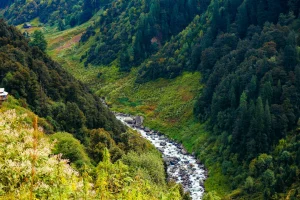 Credit: Unsplash
Credit: Unsplash
Tucked away in a remote side valley of the Parvati Valley, Malana is one of the most fascinating and enigmatic hidden gems in all of India. This ancient village is known for its distinct and isolated culture, unique social customs, and a powerful village deity, Jamlu Devta, who governs all aspects of life.
The people of Malana are believed to be descendants of Alexander the Great’s army, and they guard their traditions fiercely. The village has its own language, Kanashi, and operates one of the oldest democracies in the world. Its most famous (or infamous) rule is the “no-touch” policy, where outsiders are forbidden from touching any local person, temple, or sacred object, reinforcing its sense of mystery.
Traveler’s Tips
- Respect is Non-Negotiable: You must not touch any local resident, temple, or artifact. Fines are imposed.
- Photography: Always ask for permission before taking photos of people or private property.
- Stay: Accommodations are basic guesthouses located outside the main village.
- Access: The village is reached via a short but steep 4-km trek from the nearest road head.
Why It Attracts Travelers It’s a journey into a living-history museum. Malana’s allure is its profound mystery, its isolation, and the rare chance to observe an ancient, self-contained culture that has resisted the modern world.
Quick Facts
- Location: Parvati Valley, Kullu District
- Known For: Malana Cream, Jamlu Devta, “no-touch” policy
- Best Time to Visit: May to October (avoid monsoon)
- Experience Level: Moderate (requires a trek)
2. Tirthan Valley & Jibhi: The Riverside Sanctuaries
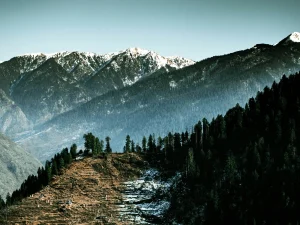 Credit: Unsplash
Credit: Unsplash
For those seeking pristine nature without the extreme altitudes of Spiti, Tirthan Valley is a perfect choice. As the gateway to the Great Himalayan National Park (GHNP). a UNESCO World Heritage Site, this valley is an eco-tourism hotspot. The Tirthan River, a tributary of the Beas, flows through it, crystal-clear and teeming with trout.
The valley is dotted with charming riverside homestays, campsites, and the picturesque village of Jibhi, known for its traditional wooden houses and nearby waterfalls. It’s the ideal place for a “slow travel” experience—spend your days trout fishing, hiking to hidden waterfalls, or simply reading a book by the river.
Traveler’s Tips
- Trout Fishing: This is one of the best places in India for trout fishing. You must obtain a permit from the forest department.
- GHNP Treks: Numerous short treks into the eco-zone of the Great Himalayan National Park start from here.
- Digital Detox: Mobile and Wi-Fi connectivity can be very spotty, making it a perfect place to disconnect.
Why It Attracts Travelers It’s an accessible paradise for nature lovers. It offers a perfect blend of relaxation (riverside homestays) and adventure (GHNP treks) in a protected, pristine environment.
Quick Facts
- Location: Kullu District (near Aut)
- Best Time to Visit: March to June, October to November
- Must-Do: Jibhi Waterfall, Serolsar Lake trek
- Known For: Trout fishing, GHNP, traditional Kath-Kuni architecture
3. Kangra Valley: History, Art, and Paragliding
 Credit: Unsplash
Credit: Unsplash
The lush, green Kangra Valley is often overlooked in favor of its more famous neighbor, Dharamshala, but the valley itself is a vast treasure trove. It’s home to the imposing Kangra Fort, one of the oldest and largest forts in the Himalayas, which offers panoramic views of the valley.
The region is also famous for its sprawling tea gardens, particularly in Palampur. But the real gems are the artistic and adventure hubs. Andretta is a tiny village known for its pottery studio, while Bir-Billing is globally recognized as the paragliding capital of India, offering world-class tandem flights.
Traveler’s Tips
- Paragliding: The best season for paragliding in Bir-Billing is October-November and March-May.
- Art & Culture: Visit the Andretta Pottery studio (try your hand at the wheel) and the ancient rock-cut Masroor Temples.
- Toy Train: For a scenic, slow journey, take the Kangra Valley Railway (a UNESCO heritage “toy train”) that runs from Pathankot to Paprola.
Why It Attracts Travelers It’s the sheer diversity. In a single region, you can experience adrenaline-pumping paragliding, explore ancient history at Kangra Fort, appreciate art at Andretta, and relax in serene tea gardens.
Quick Facts
- Key Towns: Dharamshala, Palampur, Bir-Billing
- Best Time to Visit: March to June, September to November
- Known For: Paragliding, Kangra Tea, Kangra Fort
4. Spiti Valley: A High-Altitude Cold Desert
 Credit: Unsplash
Credit: Unsplash
A journey to Spiti Valley is like a journey to another planet. Located at an average altitude of over 3,800 meters, this is a high-altitude cold desert characterized by moon-like landscapes, barren mountains, and tiny villages. Deeply influenced by Tibetan Buddhism, the valley is dotted with some of the oldest and most beautiful monasteries in the world.
Highlights include the iconic Key Monastery (perched on a hilltop), the Tabo Monastery (a UNESCO site known for its ancient murals), and Hikkim (home to the world’s highest post office). The stunning Chandratal Lake (“Moon Lake”) is a high-altitude oasis whose crystal-clear waters reflect the surrounding peaks.
Traveler’s Tips
- Acclimatization is CRITICAL: Acute Mountain Sickness (AMS) is a serious risk. Plan your itinerary to ascend slowly.
- Permits: Inner Line Permits are required for foreign nationals and sometimes for Indian nationals, depending on the route.
- The Journey: The road trip to Spiti (from Manali or Shimla) is an adventure in itself, with river crossings and high passes.
Why It Attracts Travelers For its raw, desolate, and profound beauty. It’s an expedition, not a vacation, that rewards travelers with otherworldly landscapes and a deep sense of peace and spirituality.
Quick Facts
- Location: Lahaul & Spiti District
- Best Time to Visit: June to September (when the roads are open)
- Key Towns: Kaza, Tabo
- Must-See: Key Monastery, Chandratal Lake, Hikkim
5. Kinnaur: The Land of Apples and Gods
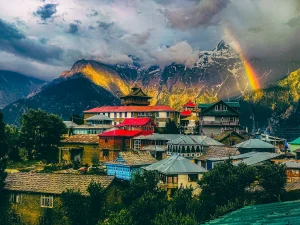 Credit: Unsplash
Credit: Unsplash
Sandwiched between the green valleys of Shimla and the arid desert of Spiti, Kinnaur is a land of stunning contrasts. This is the “middle land,” famous for its lush apple orchards, towering snow-capped peaks (like the Kinner Kailash), and a unique syncretic culture that blends Hinduism and Buddhism.
The drive through Kinnaur on the old Hindustan-Tibet Highway is one of the most scenic and thrilling road trips in the world. The Baspa Valley, with its picturesque villages of Sangla and Chitkul (the last inhabited village near the Indo-Tibet border), is a highlight, offering beautiful walks and homestays.
Traveler’s Tips
- Road Trip: The Shimla-Kinnaur-Spiti loop is a classic Himalayan road trip.
- Apple Season: Visit in spring (April-May) for the beautiful apple blossoms or in autumn (September-October) for the harvest.
- Culture: Visit the Bhimakali Temple in Sarahan, a stunning example of Kath-Kuni architecture.
Why It Attracts Travelers It offers the high-Himalayan drama of Spiti but with more greenery, accessibility, and comfort. The views of the Kinner Kailash range from Kalpa at sunrise are unforgettable.
Quick Facts
- Location: Kinnaur District
- Key Towns: Sangla, Kalpa, Reckong Peo
- Best Time to Visit: April to October
- Known For: Apples, Kinner Kailash, Baspa Valley
6. Prashar Lake: The Floating Island Lake
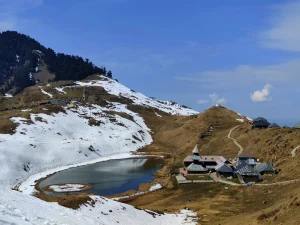 Credit: Unsplash
Credit: Unsplash
For those short on time but craving a high-altitude lake experience, Prashar Lake is a perfect choice. Located at an altitude of 2,730 meters, this sacred lake is known for its deep blue waters and a mysterious “floating island” of reeds that moves across its surface.
Beside the lake stands a beautiful 13th-century pagoda-style temple dedicated to the sage Prashar. The trek to the lake is a relatively easy 1-2 day hike that takes you through dense forests and meadows. The reward is a stunning 270-degree panoramic view of the Dhauladhar, Pir Panjal, and Kinnaur mountain ranges.
Traveler’s Tips
- Access: It can be reached via a 7-8 km trek from Baggi village or a motorable road (which can be rough).
- Accommodation: A basic forest rest house and guesthouse are available, as well as campsites. Book in advance.
- Winter Trek: In winter (Jan-Mar), the lake freezes over, and the area is covered in snow, making for a magical winter trek.
Why It Attracts Travelers It’s one of the most rewarding and accessible treks in Himachal. The combination of the mysterious floating island, the ancient temple, and the epic Himalayan views makes it a perfect weekend getaway.
Quick Facts
- Location: Mandi District
- Altitude: 2,730 meters (8,960 ft)
- Known For: Floating island, pagoda temple, panoramic views
- Best Time to Visit: All year round (different beauty in each season)
7. The Hampta Pass Trek: From Green Valley to Barren Desert
 Credit: Unsplash
Credit: Unsplash
This is one of the most popular and dramatic “crossover” treks in the Himalayas, making it an ideal offbeat adventure for beginners with good fitness. The trek starts in the lush, green Kullu Valley, full of pine forests, meadows, and rivers.
Over 5 days, you ascend to the Hampta Pass at 4,270 meters. The moment you cross the pass is one of the most breathtaking reveals in trekking: the green Kullu Valley disappears, and you are suddenly looking down into the stark, arid, and vast landscape of Lahaul, with the Chandra River far below. The trek often concludes with a visit to the stunning Chandratal Lake.
Traveler’s Tips
- Best for Beginners: It’s a great “first high-altitude trek” as it has no technically difficult sections, but fitness is still required.
- Season: The best season is from June to September.
- Gear: You must carry warm layers, as the weather at the pass can change in an instant, with snow possible even in summer.
Why It Attracts Travelers The dramatic “crossover” is the key. It’s like trekking through two different worlds in one 5-day journey, offering an incredible sense of accomplishment.
Quick Facts
- Altitude: 4,270 meters (14,010 ft)
- Connects: Kullu Valley to Lahaul Valley
- Duration: 4-5 days
- Experience Level: Beginner to Intermediate
8. Pin Parvati Pass Trek: The Ultimate Himalayan Challenge
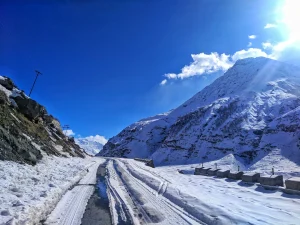 Credit: Unsplash
Credit: Unsplash
This is not an offbeat trail; it’s a high-altitude expedition and one of the most challenging and rewarding treks in Himachal. The Pin Parvati Pass is a formidable trek that connects the lush Parvati Valley (home to Malana and Kasol) with the barren Pin Valley in Spiti.
This is a trek for experienced adventurers only. It involves crossing glaciers, navigating crevasses, and ascending to a staggering 5,319 meters (17,457 ft). The journey takes you through remote villages, high-altitude lakes, and snow-covered passes, offering some of the most spectacular and untouched scenery in the Himalayas.
Traveler’s Tips
- Experts Only: This is a very strenuous, high-altitude trek. Do not attempt without prior trekking experience and a high level of fitness.
- Technical Gear: Requires proper gear, including crampons, ice axes, and ropes.
- Agency: You must go with a certified, experienced trekking agency.
Why It Attracts Travelers It’s a “bucket list” trek for seasoned mountaineers. It’s a true test of endurance and skill, and the reward is traversing one of the most beautiful and remote corridors in the Himalayas.
Quick Facts
- Altitude: 5,319 meters (17,457 ft)
- Connects: Parvati Valley to Pin Valley (Spiti)
- Duration: 10-12 days
- Experience Level: Expert / Technical
9. Lahaul Valley: The Newly Accessible Gem
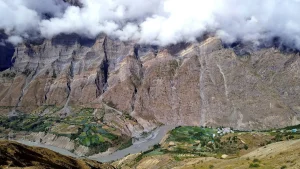 Credit: Unsplash
Credit: Unsplash
For decades, Lahaul was the remote valley you had to cross (via the treacherous Rohtang Pass) to get to Spiti. Now, thanks to the Atal Tunnel, Lahaul has become a “hidden gem” in its own right—accessible, beautiful, and less crowded than Manali.
Unlike the arid desert of Spiti, Lahaul is greener, with fertile riverbeds along the Chandra and Bhaga rivers. Keylong is the main town, but the village of Sissu, right at the tunnel’s north portal, has become a popular hub with a stunning waterfall. Lahaul shares the same Tibetan-Buddhist culture as its neighbors, with ancient gompas and a peaceful way of life.
Traveler’s Tips
- Atal Tunnel: The tunnel makes Sissu accessible even in winter, offering a unique snow-covered landscape.
- Acclimatization: It’s a great place to acclimatize for a day or two before heading higher into Spiti.
- Culture: Visit the ancient Kardang and Shashur Monasteries.
Why It Attracts Travelers It offers the cultural and scenic beauty of the high-Himalayan region (Spiti, Ladakh) but is now incredibly easy to access from Manali.
Quick Facts
- Location: Lahaul & Spiti District
- Key Towns: Keylong, Sissu
- Best Time to Visit: June to October (via road), winter (via tunnel to Sissu)
- Main Rivers: Chandra and Bhaga (which form the Chenab)
10. Khajjiar: The Serene “Mini-Switzerland”
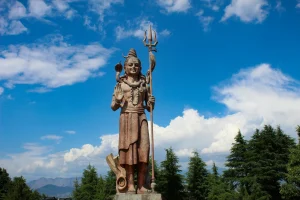 Credit: Unsplash
Credit: Unsplash
A classic “tranquil vista,” Khajjiar is a small hill station near Dalhousie. It is famously known as the “Mini-Switzerland of India” due to its uncanny resemblance to the Swiss meadows: a perfect, saucer-shaped green meadow, ringed by a dense forest of deodar and pine, with a small lake and a “floating island” in the middle.
While it can get crowded with day-trippers from Dalhousie, a visit in the early morning or an overnight stay reveals its true charm. The centerpiece is the 12th-century Khajji Nag Temple, a unique structure built in the Kath-Kuni style with intricate wood carvings.
Traveler’s Tips
- Visit Early: The meadow is magical in the early morning mist before the tourist buses arrive.
- Activities: You can enjoy zorbing, horse riding, or simply take a 5-km walk around the meadow.
- Combine It: Khajjiar is easily combined with a trip to Dalhousie and the nearby Kalatop Wildlife Sanctuary.
Why It Attracts Travelers It’s a picture-perfect, easily accessible destination that is ideal for families and those seeking a relaxed, scenic getaway without a strenuous trek.
Quick Facts
- Location: Chamba District (near Dalhousie)
- Altitude: 1,920 meters (6,300 ft)
- Known For: Saucer-shaped meadow, Khajji Nag Temple
- Best Time to Visit: All year round (snow-covered in winter)
Bonus Section: Your Guide to Responsible Offbeat Travel
Exploring these hidden gems comes with a responsibility to protect them.
- Respect Local Culture: In places like Malana and Kinnaur, customs are paramount. Always ask for permission before taking photos, dress modestly, and respect local rules (like the “no-touch” policy).
- Leave No Trace: On treks and in remote valleys, you must pack out everything you pack in. Do not litter, and avoid single-use plastics.
- Hire Local: Support the local economy by hiring local guides, staying in homestays, and using local porters.
- Sustainable Travel: Responsible adventure travel means ensuring your visit benefits the community and preserves the environment. The Tarzan Way is built on this philosophy, crafting journeys that are deeply respectful and sustainable.
FAQs
Q: What is the best time to visit these hidden gems in Himachal?
A: It depends on the region. Low-altitude valleys (Tirthan, Kangra) are best from March to June and September to November. High-altitude regions (Spiti, Lahaul, high passes) are only accessible from June to September.
Q: Do I need a permit for any of these places?
A: Yes. Foreign nationals need an Inner Line Permit (ILP) for Spiti and parts of Kinnaur. Indian nationals need a permit for the Rohtang Pass (if driving from Manali) and may need permits for certain treks. Always check the latest regulations.
Q: What is the “no-touch” rule in Malana?
A: It is a strict village rule where outsiders are forbidden from touching locals, their temples, or their homes. It is rooted in their belief system of maintaining cultural and ritual purity. Violating it can result in a fine.
Q: Is Tirthan Valley a good destination for families?
A: Absolutely. It’s one of the best. The valley is easily accessible, offers light activities like fishing and day hikes, and has many comfortable riverside homestays, making it perfect for a relaxed family vacation.
Q: What is the main difference between Lahaul and Spiti?
A: There are two valleys in the same district. Lahaul (e.g., Sissu, Keylong) is greener and more fertile, fed by the Chandra and Bhaga rivers. Spiti (e.g., Kaza, Tabo) is a high-altitude cold desert—more barren, remote, and with a stronger Tibetan-Buddhist feel.
Glossary
- Devbhoomi: A Sanskrit term meaning “Land of the Gods,” a common nickname for Himachal Pradesh.
- Kath-Kuni: A traditional Himachali architectural style using interlocking wood and stone without mortar, seen at Prashar Temple and in Kinnaur.
- AMS (Acute Mountain Sickness): A common illness at high altitudes due to a lack of oxygen. Acclimatization is the only cure.
- Gompa: A Tibetan Buddhist monastery, common in Spiti, Lahaul, and Kinnaur.
- Trek: A long, adventurous walk, often lasting multiple days.
- ILP (Inner Line Permit): A special travel document required for non-locals to visit restricted areas near international borders.
Conclusion: Embrace the Unknown
Himachal Pradesh is a land of endless discovery. While the main towns offer comfort, the true soul of the Devbhoomi lies in its hidden valleys, on its high mountain passes, and in the hearts of its ancient communities. From the profound mystery of Malana to the serene, floating island of Prashar Lake and the epic challenge of the Pin Parvati Pass, these gems offer more than just a vacation—they offer an adventure.
They remind us that the most rewarding journeys are often the ones that take us off the beaten path. If you are prepared to lean into the mystery and wander into the unknown, The Tarzan Way (TTW) is ready to craft your perfect immersive journey—created for those who know that every journey has a story.






